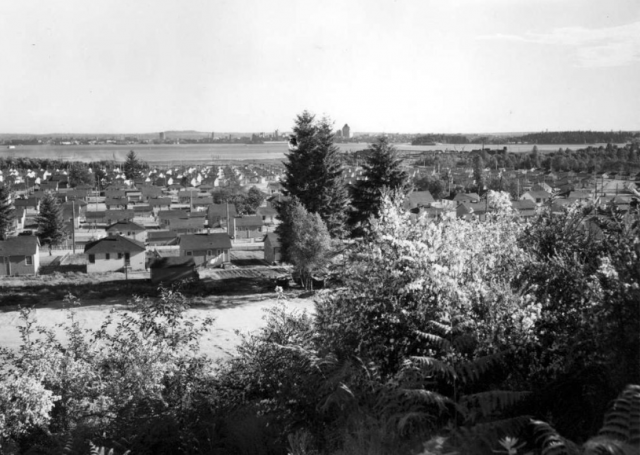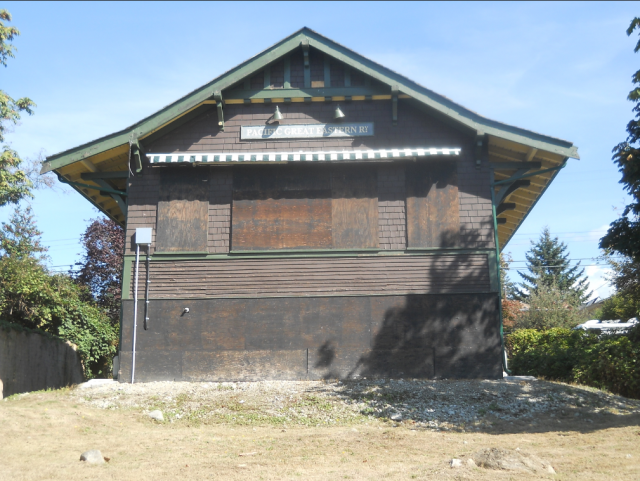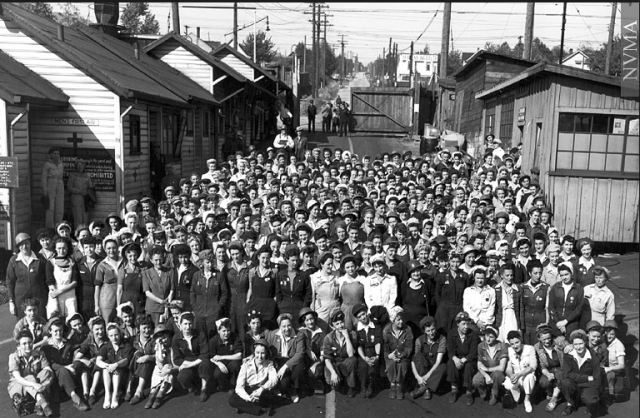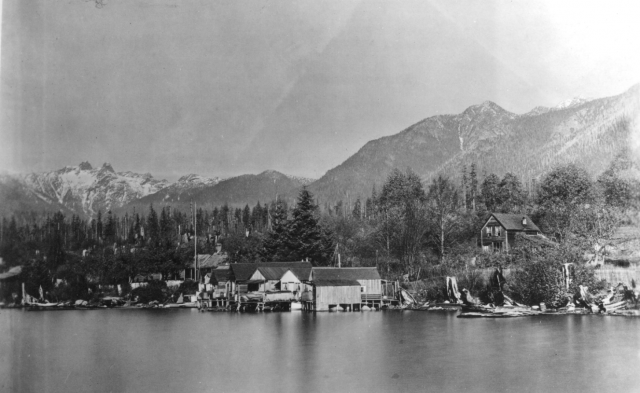 There’s so much history at Lonsdale Quay, that I thought we’d stay here and let it roll over us while we caffeinate at the Bean around the World (now the Shipyards)
There’s so much history at Lonsdale Quay, that I thought we’d stay here and let it roll over us while we caffeinate at the Bean around the World (now the Shipyards)
A Ranch:
If we time travelled back to the late 1880s, we’d be sitting on Tom Turner “ranch.” It stretched from Chesterfield to Rogers Avenue and sloped down from Esplanade to the water. The farm house sat roughly in the middle—where ICBC is today. Turner’s farm supplied vegetables to Moodyville residents, and because he had the only grass field in North Vancouver, his farm became a picnic destination for the locals. Turner later sold the property to J.C. Keith (namesake of Keith Road) and returned to England.
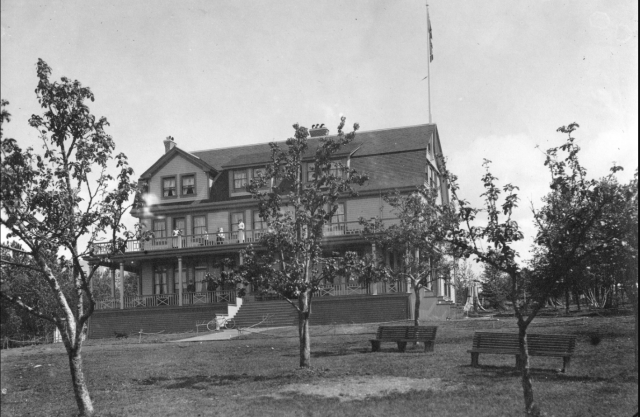
A Hotel:
In those days, Esplanade was a wide tree-lined promenade that extended west along the shoreline from Lonsdale to just past Chesterfield. The Hotel North Vancouver and its Pavilion were on the north side of the street, where the Shoppers Drug Mart is today. The hotel, owned by Pete Larson, attracted people from all over Vancouver who took the ferry and stayed for $2 a day or $10 a week, or just came for the day to check out the bandstand, balloon flights or perhaps tight-rope walking. The hotel’s grounds also had a boat dock and a swimming beach, because in those days the water reached to just below Esplanade.
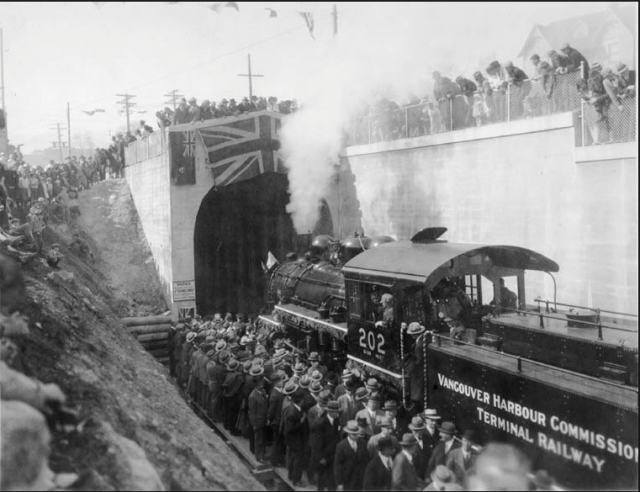
A Tunnel:
Unless you’ve been stuck at the foot of Chesterfield Avenue waiting for a train to pass, you’ve probably not given much thought to “the Lonsdale Subway.” The Subway is actually a 1,585 foot tunnel, built in the late 1920s to link two railways. The tunnel ran from St. Georges to Chesterfield and connected the Terminal Railway to the Pacific Great Eastern Railway (later BC Rail, then CN Rail).
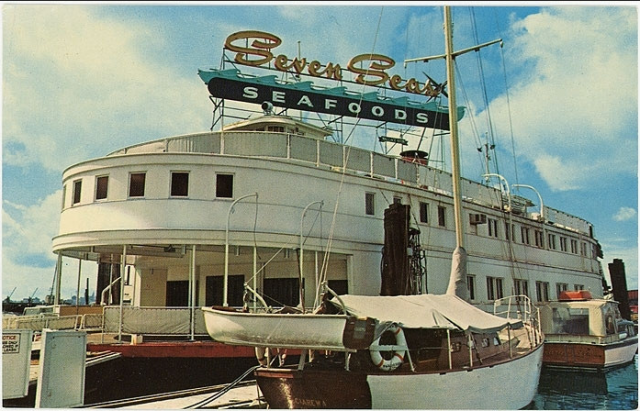
A Ferry:
Most North Vancouver residents will remember the Seven Seas, a restaurant that was moored at the foot of Lonsdale. Some of you may even remember it as Norvan Ferry #5, a forerunner to the Seabus, and one of the ferries that brought people to Vancouver and back. Ferry #5 went into service in 1941 and was sold to restauranteur Harry Almas for $12,000 in 1959, a year after the ferries took their last run across the Inlet.

After the Seabus launched in 1977 and kick-started economic activity in Lower Lonsdale, a plan was hatched for the Lonsdale Quay development. The thought was that densification of the area, with over 300 housing units, restaurants and shops would be encouraged, but care would also be taken to restore the heritage buildings in the corridor. Mayor Jack Loucks was certainly optimistic. “It has been said that Lonsdale Quay will become an extension of Granville Street,” he said. “I like to think that when the project is complete, Granville Street will become an extension of Lonsdale Avenue.”
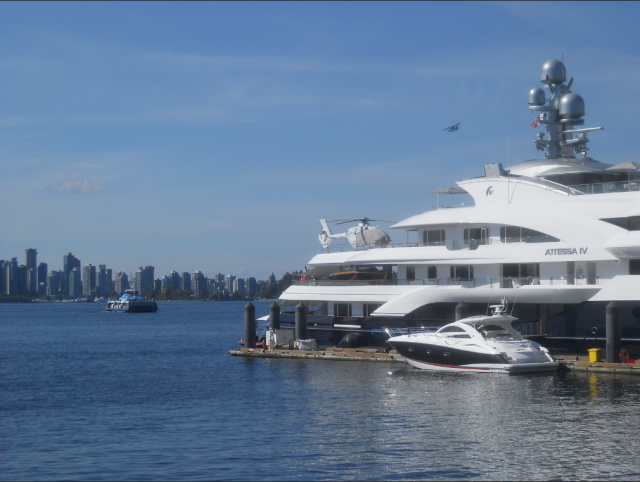
Well, perhaps not. More like a parking lot for billionaires and their luxury yachts.
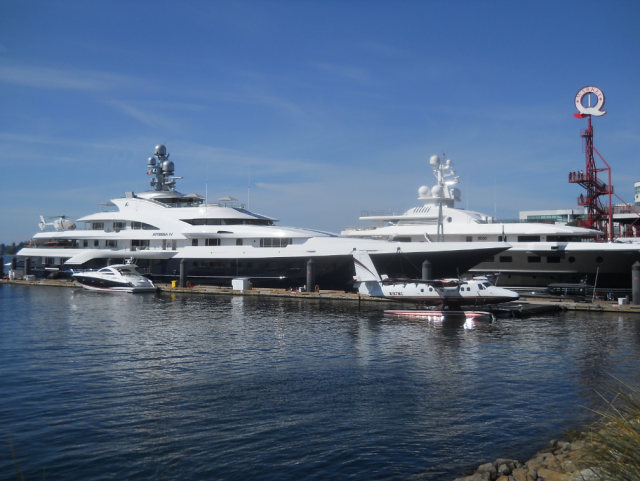
Next week we’re getting back on our bikes and cycling the newest part of the Spirit Trail from Lonsdale Quay to Mosquito Creek.
*Top photo: View of North Vancouver west of Lonsdale Avenue showing Tom Turner’s cabin in 1890. Courtesy CVA OUT P79
The North Shore’s Spirit Trail – Moodyville (part 1)
Moodyville to Lonsdale Quay (part 2)
Pemberton to Capilano River (part 6)
The © All rights reserved. Unless otherwise indicated, all blog content copyright Eve Lazarus.




